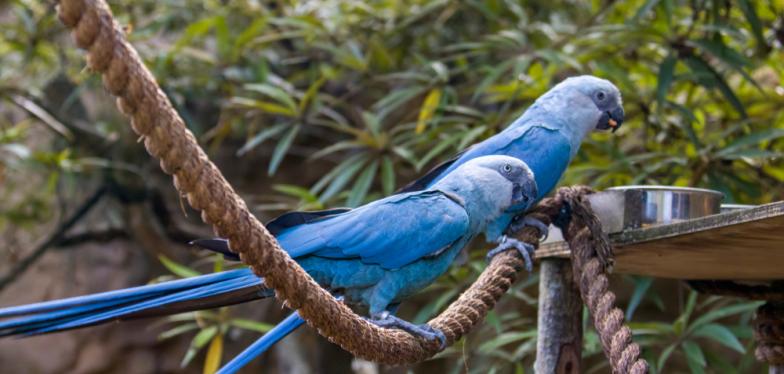The blue-green Spix's macaw returns to Brazil
Twenty years after its disappearance in the wild, the world's rarest bird is being reintroduced into its only natural habitat, the Caatinga forest in Brazil, with the help of Pairi Daiza, among other organisations.

In the early 19th century, German naturalist Johann Baptist von Spix discovered a relatively small parrot with blue-green plumage and blue-rimmed eyes in the semi-desert region of Caatinga, in the state of Bahia, in north-eastern Brazil. The bird measures 50 by 60 cm weighs around 400 g and bears the name of its discoverer. Poachers soon began hunting this charming creature, illegal trade in the species emerged and much of its dry, thorny habitat was turned into farmland.
In 2000, the last known Spix's macaw disappeared from the wild. Only a few dozen remained in captivity in Berlin. The NGO Association for the Conservation of Threatened Parrots (ACTP) therefore felt that it was high time to release the species back into its original biotope. The association set up a reintroduction project in collaboration with Pairi Daiza and the Pairi Daiza Foundation, among others. The Walloon Zoo in Brugelette received eight Spix's macaws as part of this project. Three were transferred from Berlin to the Brazilian city of Curaçá in March 2020, along with 49 others. Eight were recently released in Brazil and more will follow this year and next.